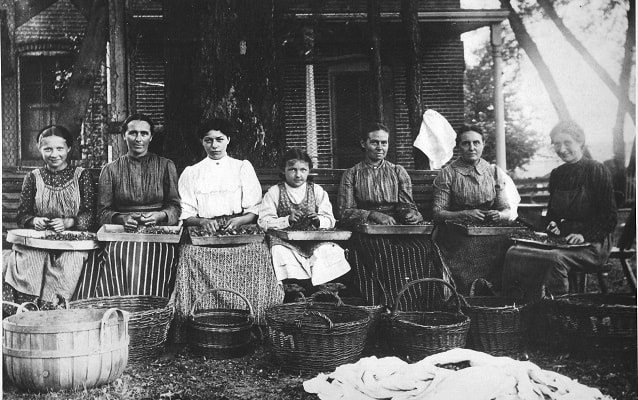Last updated: December 13, 2017
Place
Communal Kitchen and Coopershop Museum

Photo courtesy of Amana Heritage Society
The Ruedy Küche (kitchen house), built in 1863, served up to 40 community members at each meal and was one of about nine kitchen houses in Middle Amana. In the communal Amana Colonies no residents had their own kitchens. All community members and Taglöhners (hired hands) ate at one of the over 50 kitchens operated in the Amana Colonies. Men and women ate separately and with minimal conversation. Each kitchen had a Küchebaas (kitchen boss) who directed the preparation of three meals and 2 small "snacks." The Küchebaas and their families lived in an adjoining house and supervised the gardens and the preservation of fruits and vegetables for the winter. Perkins and Wick, in their 1891 book, History of the Amana Society or Community of True Inspiration, wrote, "When passing their laundries and ‘kitchens’ where the women are working, bursts of innocent laughter mingled with melodious song are to be heard. . ."
Kitchens resembled other residential dwellings, except for an extension to the side. The kitchens were in the extension, while the kitchen boss lived in the main part of the house. Several nearby homes were assigned to one kitchen house where they received their meals. No one prepared individual family meals in the communal Amana Colonies, although most families did begin to bring their meals home to eat in the last years of the communal period.
The coopershop sits across the street from the Ruedy Küche. The coopers in the communal Amana Colonies produced tubs, barrels, and other containers used throughout the community.
